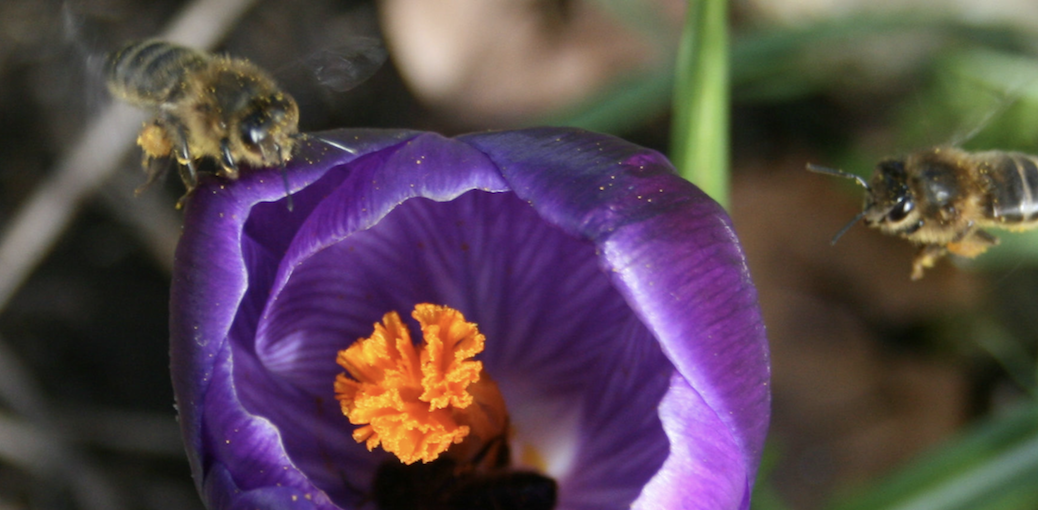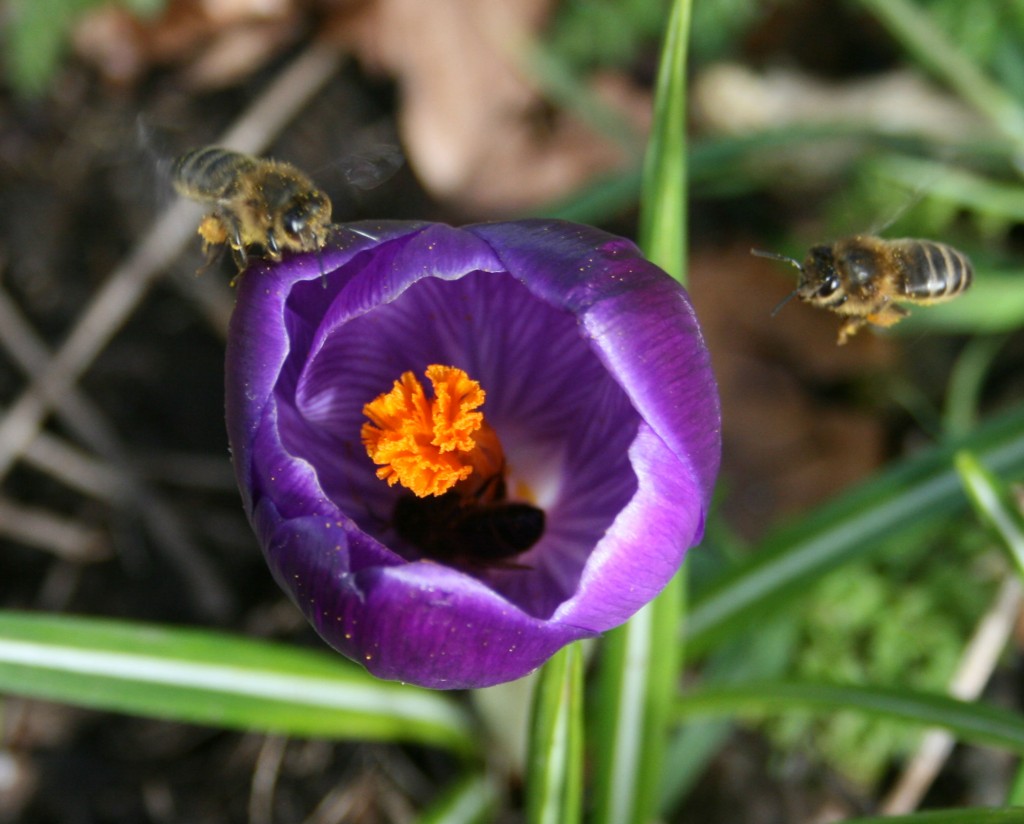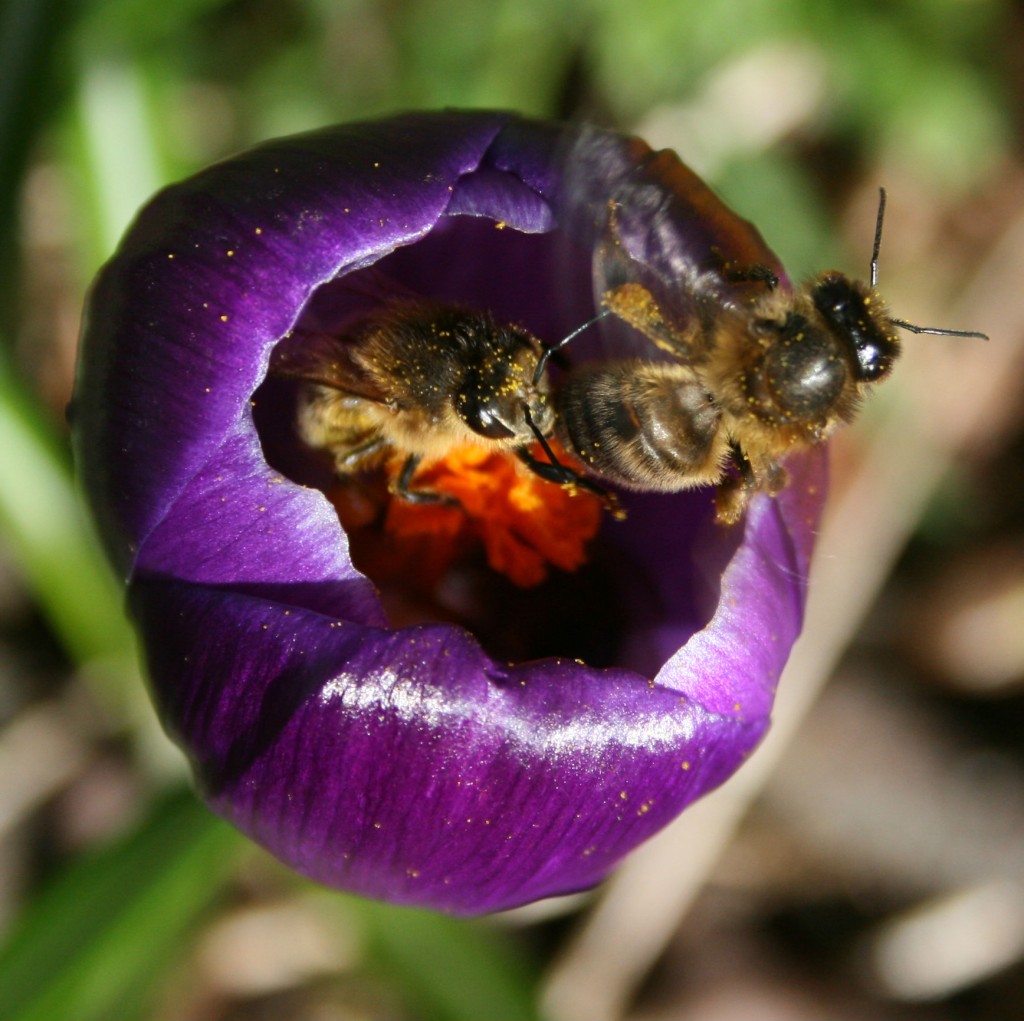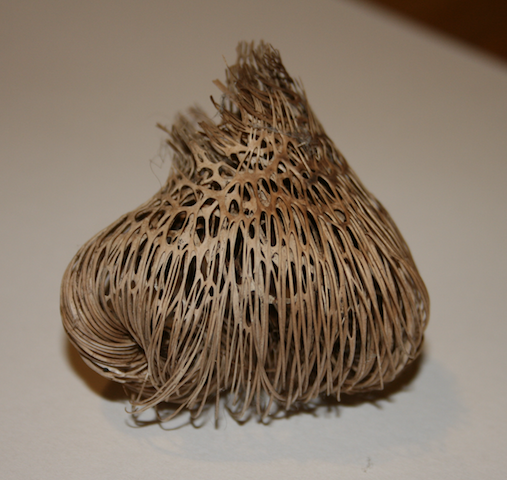Crocuses are only just opening now but should be open every sunny day from now until mid-March. The bees won’t get honey from these but fresh pollen at this time of the year is important as it will give them all a bit of a boost and help get the queen laying.
You can see the bright orange stamens inside the flower and grains of orange pollen on the flower petals and on the bees (below). Once packed tight into the corbiculae (pollen baskets) though, the pollen loads are quite a dirty shade of orange as you can see on these two little airborne bees above. There’s another at work inside the flower. Click the photos for a better view.
There were three bees in this flower although you can only see two in the photo. It’s hardly open but it should be well pollinated; you can see the little grains of pollen scattered around the mouth of the flower and all over the bees themselves.
Here are some things you might not know about crocuses
There are about 90 species in the crocus genus which is part of the Iris family.
The name crocus is thought to originate from a Hebrew word meaning ‘saffron’. Not surprising as the spice – saffron – comes from the stigmas of the saffron crocus and is highly prized and priced so there was always great interest in their cultivation dating back to ancient times.
The crocus is thought to have been brought from Greece, where it was grown as a spice, to the Netherlands. The Dutch growers bred many other varieties for the beauty of their colourful flowers – ranging as they do from pale cream through all shades of yellow and orange to purple as above.
According to Wikipedia the taxonomy of crocuses is based on:
What the hell is a corm tunic says you.
Well firstly, what’s a corm?
Corms and bulbs are both overwintering storage devices but whereas a bulb is made of swollen leaf bases, a corm is a swollen stem base surrounded by petioles or leaf stalks. The skeletonised petiole bases have a protective function against cold and damp and are known as tunics. Isn’t that lovely!
This thing below is a Crocus tunic:
But if the weather is just too shitty to bear – click here to watch this clip of me and Al instead. Trust me.
Click here for more February bee forage
Click here for March bee forage
Copyright © Beespoke.info, 2014. All Rights Reserved.




Have you a chart which can show which pollen the bees are collecting and what colour the pollen is ?
Hello Gerry,
Funny you should mention that! The plan is to post photos of bees with pollen as flowers come into bloom through the year. So far there are photos in the posts ‘Garden Heathers’, ‘Snowdrops’ and ‘Crocus Bees’ and there is a chart in the ‘Bee Flora’ post with a guide to some of the more common bee flowers and including pollen colours.